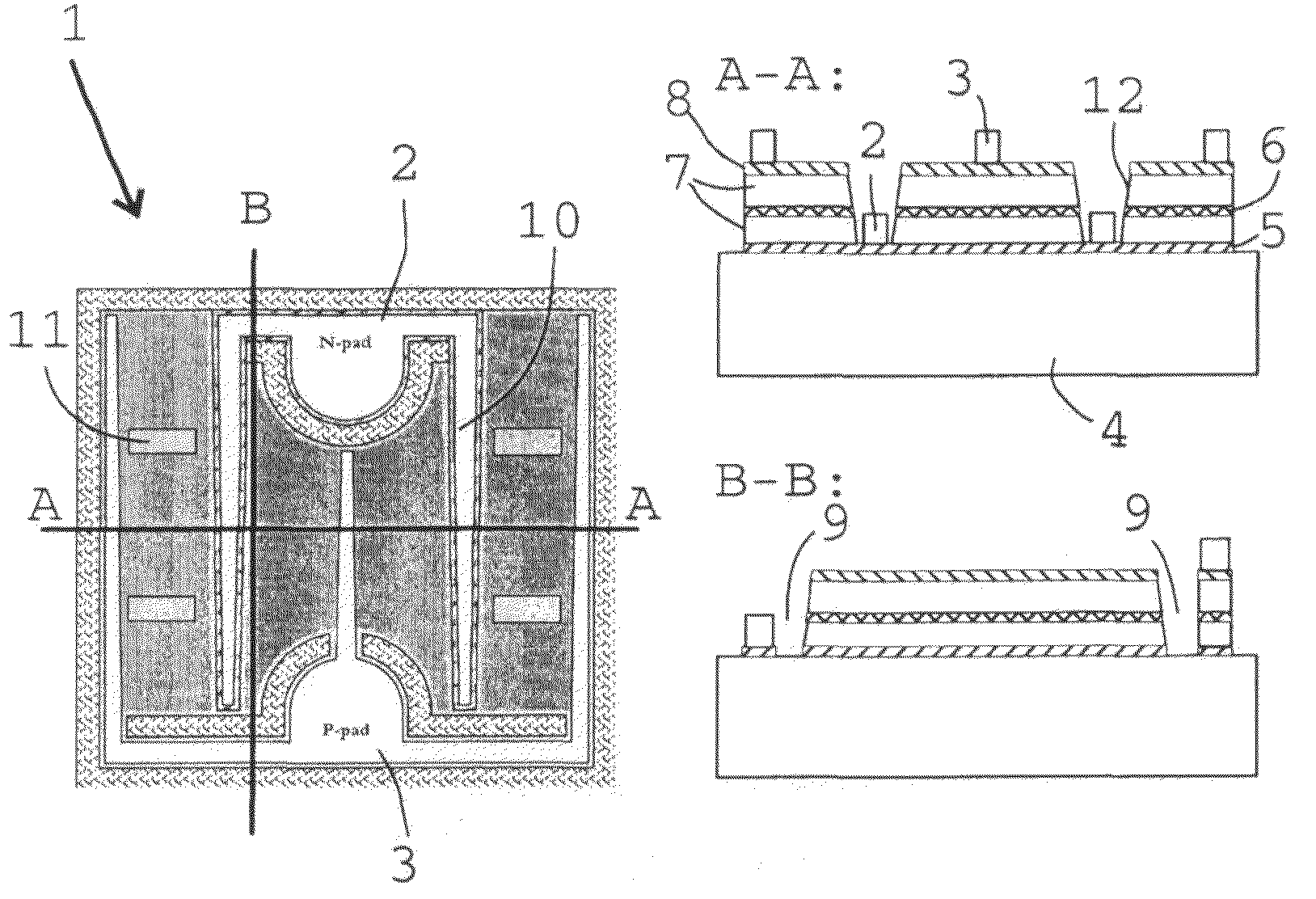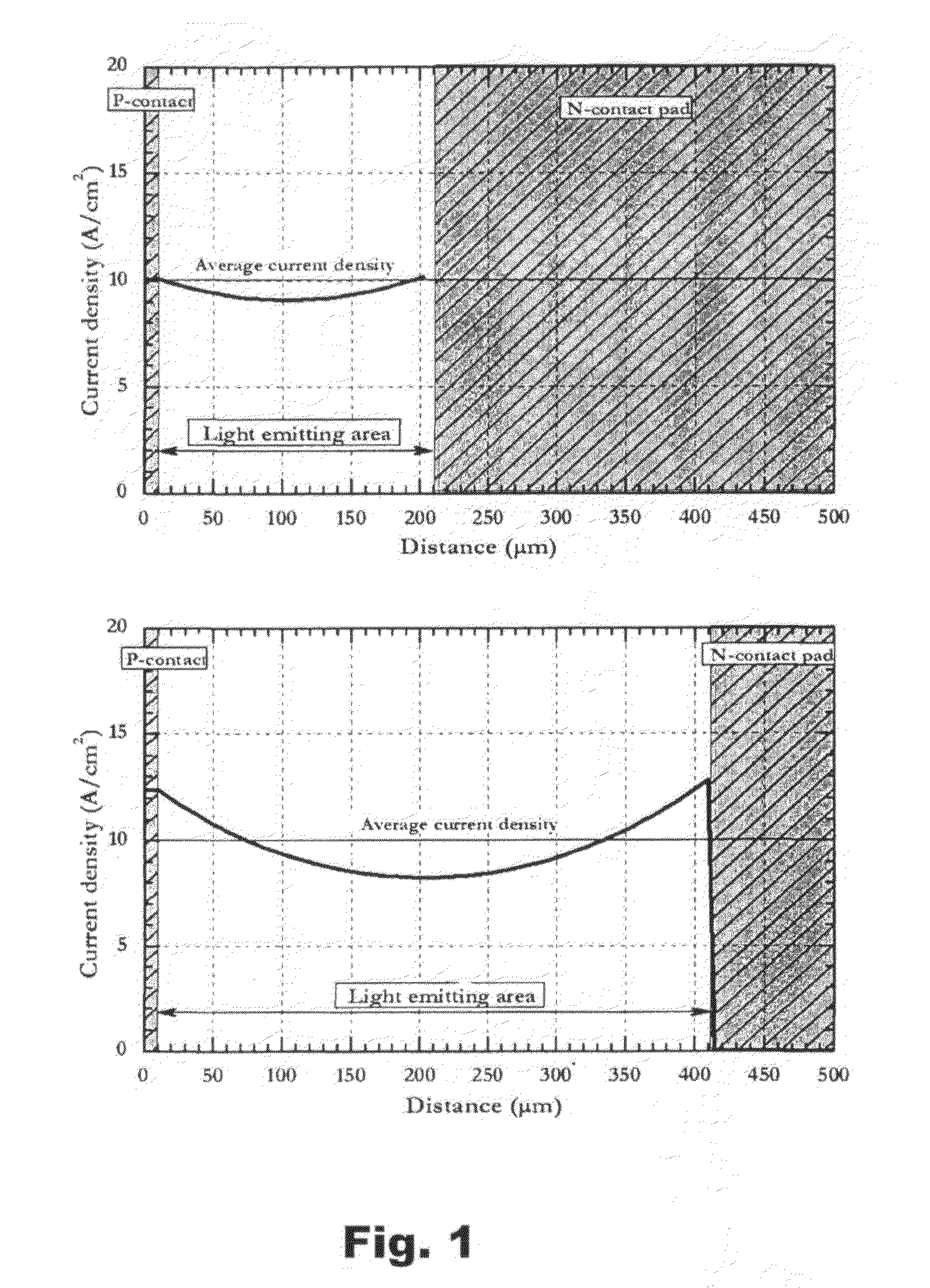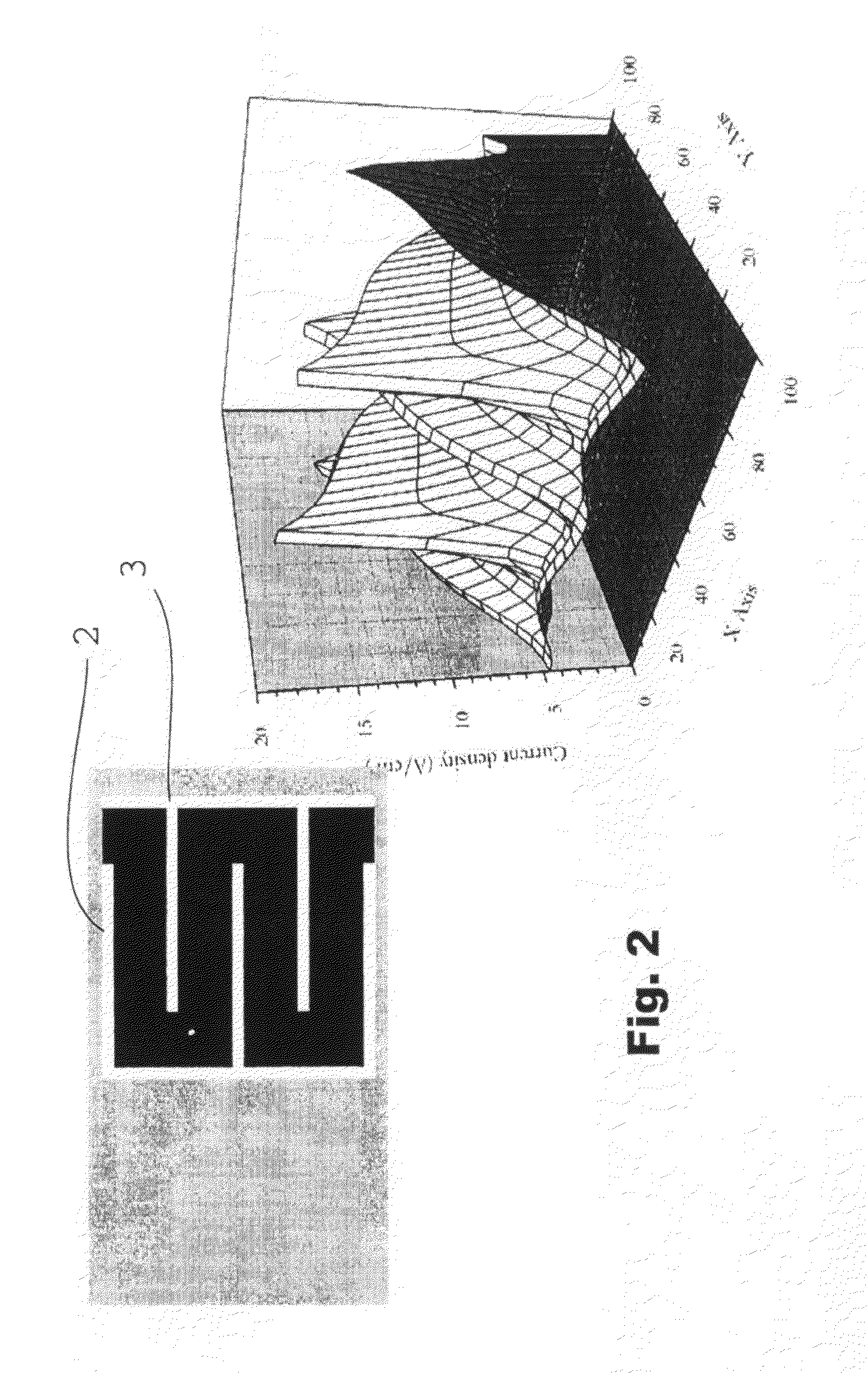Light emitting diode
a diode and light-emitting technology, applied in the direction of basic electric elements, electrical equipment, semiconductor devices, etc., can solve the problems of reducing reducing the efficiency of devices, so as to increase the overall perimeter of vertical layer structure, enhance light extraction, and uniform current density
- Summary
- Abstract
- Description
- Claims
- Application Information
AI Technical Summary
Benefits of technology
Problems solved by technology
Method used
Image
Examples
Embodiment Construction
[0016]FIG. 1 shows calculated current densities in a linear LED chip with a length of (the upper graph) 200 μm and (the lower graph) 400 μm. The current spreading length in both cases is 200 μm. As is seen in the figure, due to the large horizontal dimensions relative to the current spreading length, current density in both cases is not uniform, uniformity becoming higher with increase of the chip length. One can see that in the second case, current density is far from uniform.
[0017]The interdigitated electrodes 2, 3 of the LED design of FIG. 2 are arranged to provide a distance between the electrodes smaller than the current spreading length. In spite of this, as is seen in the graph of FIG. 2, the current density over the chip area is highly non-uniform having very strong local maxima at the ends of the finger-like protrusions of the electrodes.
[0018]In the LED chip 1 of FIG. 3, the first and second electrodes 2, 3 establish a modified interdigitated geometry extending over the en...
PUM
 Login to View More
Login to View More Abstract
Description
Claims
Application Information
 Login to View More
Login to View More - R&D
- Intellectual Property
- Life Sciences
- Materials
- Tech Scout
- Unparalleled Data Quality
- Higher Quality Content
- 60% Fewer Hallucinations
Browse by: Latest US Patents, China's latest patents, Technical Efficacy Thesaurus, Application Domain, Technology Topic, Popular Technical Reports.
© 2025 PatSnap. All rights reserved.Legal|Privacy policy|Modern Slavery Act Transparency Statement|Sitemap|About US| Contact US: help@patsnap.com



